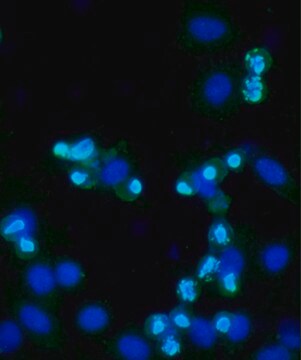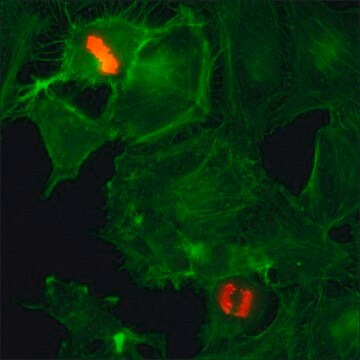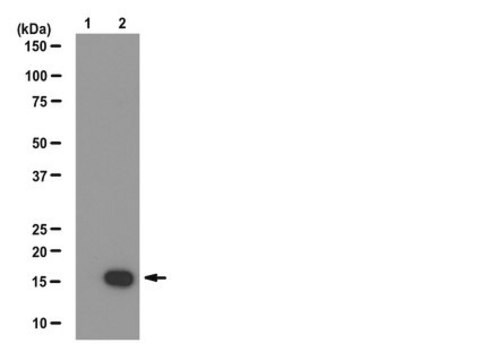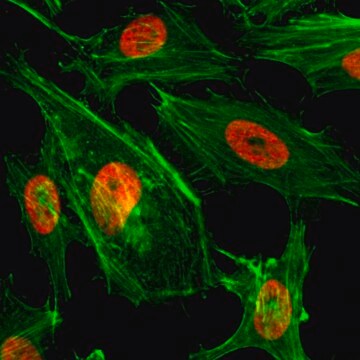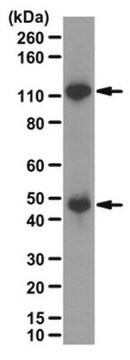05-1354
Anti-Histone H3 Antibody (Dimethyl K9, Phospho S10), clone 6HH3-2C5
ascites fluid, clone 6HH3-2C5, from mouse
Sinonimo/i:
H3K9me2S10P, Histone H3 (di methyl K9, phospho S10), H3 histone, family 3B (H3.3B)
About This Item
Prodotti consigliati
Origine biologica
mouse
Livello qualitativo
Forma dell’anticorpo
ascites fluid
Tipo di anticorpo
primary antibodies
Clone
6HH3-2C5, monoclonal
Reattività contro le specie
human
Reattività contro le specie (prevista in base all’omologia)
Drosophila (based on 100% sequence homology)
tecniche
immunocytochemistry: suitable
western blot: suitable
Isotipo
IgG1κ
N° accesso Genebanck
N° accesso UniProt
Condizioni di spedizione
wet ice
modifica post-traduzionali bersaglio
dimethylation (Lys9), phosphorylation (pSer10)
Informazioni sul gene
human ... H3F3B(3021)
Descrizione generale
Specificità
Immunogeno
Applicazioni
A 1:500 dilution of a representative lot of this antibody detected Dimethyl (Lys9)-Phospho (Ser10) Histone H3 in A431 and HeLa cells.
Epigenetics & Nuclear Function
Histones
Qualità
Western Blot Analysis:
A 1:1,000 dilution of this antibody detected Dimethyl (Lys9)-Phospho (Ser10) Histone H3 in 10 µg of untreated and Etoposide-treated HeLa acid extracts.
Descrizione del bersaglio
Stato fisico
Stoccaggio e stabilità
Handling Recommendations: Upon receipt and prior to removing the cap, centrifuge the vial and gently mix the solution. Aliquot into microcentrifuge tubes and store at -20°C. Avoid repeated freeze/thaw cycles, which may damage IgG and affect product performance.
Risultati analitici
Untreated and Etoposide-treated HeLa acid extracts.
Note legali
Esclusione di responsabilità
Non trovi il prodotto giusto?
Prova il nostro Motore di ricerca dei prodotti.
Codice della classe di stoccaggio
12 - Non Combustible Liquids
Classe di pericolosità dell'acqua (WGK)
nwg
Punto d’infiammabilità (°F)
Not applicable
Punto d’infiammabilità (°C)
Not applicable
Certificati d'analisi (COA)
Cerca il Certificati d'analisi (COA) digitando il numero di lotto/batch corrispondente. I numeri di lotto o di batch sono stampati sull'etichetta dei prodotti dopo la parola ‘Lotto’ o ‘Batch’.
Possiedi già questo prodotto?
I documenti relativi ai prodotti acquistati recentemente sono disponibili nell’Archivio dei documenti.
Il team dei nostri ricercatori vanta grande esperienza in tutte le aree della ricerca quali Life Science, scienza dei materiali, sintesi chimica, cromatografia, discipline analitiche, ecc..
Contatta l'Assistenza Tecnica.

